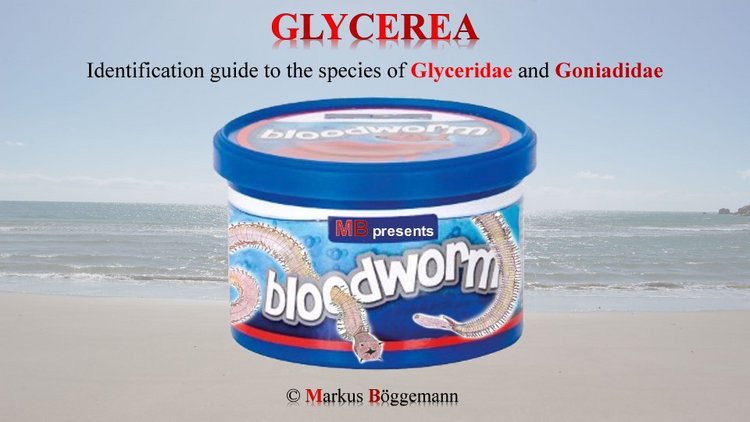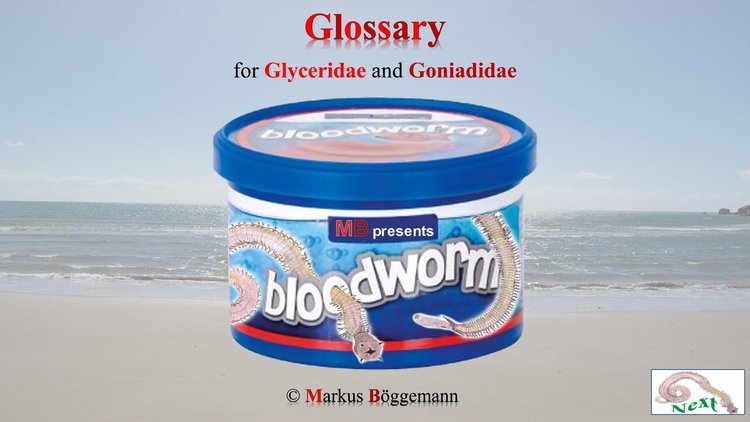GLYCEREA
The purpose of this work is to provide a guide to the identification of all worldwide described GLYCEREA GRUBE, 1850 sensu HARTMAN, 1950
including
Glyceridae GRUBE, 1850 and Goniadidae KINBERG, 1865.

The purpose of this work is to provide a guide to the identification of all worldwide described GLYCEREA GRUBE, 1850 sensu HARTMAN, 1950
including
Glyceridae GRUBE, 1850 and Goniadidae KINBERG, 1865.

Some of the main diagnostic characters are located on the eversible proboscis.
Jaws are hardened, dark and often can be studied even through the body wall. However, if the integument is not transparent, a dissection is necessary.
This also applies to the proboscidial papillae. They are most easily observed when the structure is everted, but can also be seen when dissected.
However, then the shape of soft papillae and their morphology may not be well-defined.
A correct identification is hardly possible without these proboscidial characteristics, but sometimes a preparation of the animals is too difficult or even not allowed. Therefore, two “classic” keys with predefined order for specimens with everted and inverted proboscis are provided here.
But if you prefer your own way, you should use the also available third alternative (GlyKey) based on the interactive identification programme IntKey.

Citation:
Böggemann, M. (2023): GLYCEREA – Identification guide to the species of Glyceridae and Goniadidae.
Including:
- Key for specimens with everted proboscis
- Key for specimens with inverted proboscis
- GlyKey – An interactive identification guide for Glycerea (Annelida: “Polychaeta”)
- Glossary for Glyceridae and Goniadidae
(online publication: www.uni-vechta.de/biologie/das-team/boeggemann-markus/online-publication)